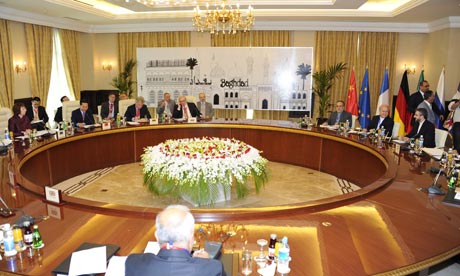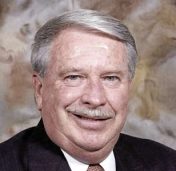Two weeks ago, the world watched the transition of Afghan security from the International Security Assistance Force (ISAF) to the nation’s own local armed forces. ISAF is a composite of NATO forces that have attempted to rebuild a battered Afghanistan for the past twelve years. The moment was marked with a mixture of relief, concern, and ambivalence across the globe. Some, including Afghan President Hamid Karzai, noted the achievement that this marked for the country. Others, including many political pundits in NATO countries, were more restrained with their optimism. The complications that have come with the announcement of talks between the Afghanistan government, US government, and the Taliban, have only amplified the fact that Afghanistan is far from secure.
[captionpix align=”right” theme=”elegant” width=”300″ imgsrc=”http://natoassociation.ca/wp-content/uploads/2013/07/afghnato1.jpg” captiontext=””]
Arguably, it is most important to consider whether or not the Afghan National Security Forces (ANSF), consisting of approximately 333,000 troops, will be able to handle the increasing pressure of the Taliban and other anti-government fighters in the country. While the agreement to begin talks has been made by all parties, the fighting has not yet abated. If the talks fail, fighting will continue with the potential for increased violence. ANSF’s concerns are not misplaced; this past spring has been one of the most violent in Afghanistan’s recent history, with 478 people killed in April alone (including Taliban fighters). Attacks on Kabul and Jalalabad have shown that the Taliban are serious about their promise to launch a ‘monumental’ offensive this year.
As NATO leaders ponder their exit timelines and worry about increasingly agitated citizens at home, a major point of reflection for them in the coming years will be the legacy of their intervention in Afghanistan. NATO members impacted directly through economic pressures and damaged military infrastructure may see the war as a problem they are ready to be rid of. Many Americans revel in the death of Osama bin Laden; but in light of the devastation caused for all parties, it is difficult to point to other clear success points. The body count of terrorists killed or captured by the United States in its ‘War on Terror’ is impressive, but the bombings in Boston show that terror can still reach the shores of America, as it can anywhere else. In Afghanistan specifically, where the goal was to create a state that could help fight terror, success on this account remains to be seen.
The efforts of ISAF to install certain principles dear to Westerners, particularly respect for and inclusion of women, have had some notable successes. However, progress in this regard has only fuelled the anger of the extremists on the ground. Furthermore, it remains unclear whether or not the regime in Afghanistan has successfully been democratized. Karzai, as the designated strongman of the Western powers, has not shown the democratic character expected of him and has arguably increased the ethnic tensions within Afghanistan.
The ISAF mission in Afghanistan has suffered a number of setbacks, but to call the entire mission a failure would be shortsighted. The central goal of the mission was to create an allied state in Afghanistan that would prevent the harbouring of violent anti-Western actors. This goal is still attainable. The key to this is determining whether or not the Afghan security forces can withstand the increased military and political pressures put on by the Taliban. Karzai appears to be a dead-weight for the Republic’s government; a replacement head of state may be able to keep the Western-created structures of power in place.
Before any transition can happen – if it happens – the Kabul-based government will have to survive the coming months. The current Afghan government has to show its people that it has credible leadership (beyond Karzai and his cadre) and ideas different than those of the Taliban. It is crucial that the government not only demonstrate its different vision for the country, but also prove that it is capable of achieving these goals without on-the-ground Western support. Complicating this even further is the fact that if ISAF forces are very public in their engagements with the Taliban, even if they are acting under the leadership of the Afghan military, it sends a message that the Taliban has a greater ability to influence international actors than the government.
Currently, the facts of the situation seem to suggest a bleak future for post-war Afghanistan, impacting NATO-members and Afghans alike. Though the country continues to enjoy rapid economic growth and has seen some social success with the inclusion of women in political and social processes, the security situation remains fragile.
In order for the final recounting of the war not to read as an abject failure, three key things will need to occur: firstly, the Taliban will have to be persuaded to put down their arms and contest their conservative Islamism in the political arena. While Western powers may not like their enemy’s potential for political success, they should see it as preferable to continued violent strife in the country. Secondly, Karzai will have to leave, and be replaced by a truly democratic successor. The aim would be a replacement head of government who provides Afghanistan with not only a new face, but a new ethos, independent of Karzai’s cronyism and political opportunism. This may mean someone friendlier with the Taliban, but if their conservative ideals are contested fairly and openly in the political arena, then Afghanistan (and its allies seeking a stable partner) will have won a crucial victory. Lastly, Afghans themselves will have to gain a sense that protecting their country as a whole, rather than particular groups or territories within it, is a worthy cause.
While some have noted that a united Afghanistan is not in and of itself a desirous goal, if security and prosperity might be achieved better through separate states, it is more important to focus on the benefits of what unity can bring them. Thirty-years of almost uninterrupted bloodshed and loss have left enmity on a scale that few can imagine. The loss and hardship of an oppressed, shunned people has proven to be an immensely powerful thing; until Afghans harness this to create a future that does not resemble their past, the legacy of the Afghan War will be only one of loss.




